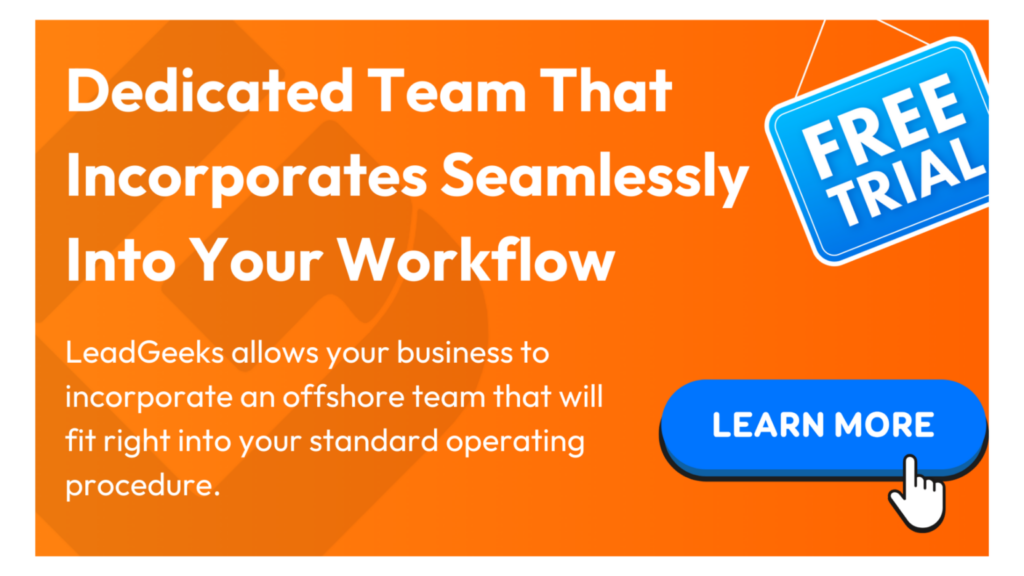In the highly competitive life sciences industry, generating qualified leads isn’t just about outreach—it’s about building a repeatable, scalable process that aligns with how scientists, researchers, and decision-makers actually evaluate new solutions. Unlike general B2B markets, life science buyers follow a longer, evidence-driven decision cycle. That means life science B2B lead generation requires a tailored approach that blends precision targeting, the right platforms, automation, and human connection.
This guide breaks down how to build a process that scales without sacrificing personalization or quality.
Mapping the Buyer Journey in Life Sciences
Life science companies sell into complex ecosystems; from lab researchers and procurement teams to principal investigators, compliance officers, and executives. Each stakeholder plays a role in the buying decision, and understanding their journey is the cornerstone of building a scalable life science B2B lead generation process.
Unlike simpler B2B markets, the life sciences buying journey is long, evidence-driven, and requires nurturing at multiple touchpoints. Here’s how it typically unfolds in practice:
Awareness Stage: Spotting the Problem
At this stage, prospects realize they have a challenge; whether it’s reducing experimental errors, improving lab efficiency, or sourcing more reliable reagents and equipment. However, they are not yet solution-focused; they’re seeking clarity.
- Practical steps for marketers:
- Publish educational assets like white papers, explainer videos, and webinars focused on industry-wide challenges rather than your product.
- Invest in SEO targeting problem-based queries (e.g., “how to reduce contamination in cell culture”) to capture early interest.
- Run thought-leadership campaigns on platforms like LinkedIn to establish credibility before the buyer even starts comparing vendors.
The goal here isn’t to sell but to become the trusted guide they turn to as they define their problem.
Consideration Stage: Comparing Solutions
Once prospects know what problem they’re solving, the journey shifts into comparison. Buyers begin evaluating possible vendors, looking for technical credibility, proof of reliability, and peer validation. In life sciences, trust often depends on scientific rigor—not flashy marketing.
- Practical steps for marketers:
- Share case studies showing measurable outcomes (e.g., faster assay development, lower failure rates).
- Provide use-case webinars or live demos tailored to specific roles (what matters to a bench scientist differs from what a procurement director cares about).
- Highlight third-party validation (citations, published research using your product, or collaborations with academic institutions).
Here, the key is answering: “Why your solution—and not a competitor’s?”
Decision Stage: Enabling the Final Step
By this stage, buyers have shortlisted vendors and are close to purchase; but procurement in life sciences is rarely a single decision. Researchers may need to convince procurement teams, while executives weigh ROI and compliance risks.
- Practical steps for marketers:
- Offer ROI calculators or cost-benefit breakdowns tailored to procurement teams.
- Provide technical validation kits, free trials, or pilot projects that allow researchers to prove internal value.
- Ensure you have frictionless onboarding materials; quick-start guides, training videos, and responsive technical support that reduce hesitation.
The decision stage is less about persuasion and more about removing friction so stakeholders can confidently say “yes.”
Why This Matters for Lead Generation
Without mapping these stages, even the most sophisticated outreach falls flat. Sending a demo invite to a scientist still defining their problem feels pushy, while sending an awareness-level eBook to someone at the procurement decision stage wastes a hot lead.
By aligning outreach, content, and touchpoints with each stage, you ensure your life science B2B lead generation process delivers the right message at the right time; making every touchpoint feel relevant rather than sales-driven.
Tools and Platforms that Streamline Outreach
Life science B2B lead generation becomes overwhelming when outreach efforts rely solely on manual processes. Sales reps can waste hours switching between spreadsheets, email inboxes, and LinkedIn tabs without ever creating meaningful engagement. That’s where the right tools and platforms come in—making outreach more efficient, scalable, and measurable.
CRM Systems for Centralized Management
A Customer Relationship Management (CRM) system is the backbone of any scalable lead generation process. Platforms like HubSpot, Salesforce, or Zoho allow you to:
- Centralize contact details, company data, and activity history.
- Track the movement of leads along the buyer journey.
- Automate reminders for follow-ups so no opportunity falls through the cracks.
In practice: A sales team at a biotech services firm can use their CRM to see that a prospect downloaded a white paper two weeks ago, then opened an email about case studies. Instead of cold-calling, the rep knows to tailor outreach around the research challenges that prospect is already showing interest in.
Email Automation Platforms for Personalization at Scale
Generic email blasts rarely resonate in the life sciences. Tools like Mailchimp, Outreach.io, or Reply.io enable personalized sequences without requiring manual copy-paste work for every lead. These platforms allow you to:
- Create segmented campaigns by audience type (e.g., academic researchers vs. biopharma executives).
- Set triggers based on actions, like when someone clicks a link or attends a webinar.
- Test subject lines, CTAs, and timing to optimize engagement.
In practice: A life science vendor can create one sequence tailored to lab managers that emphasizes workflow efficiency and another for procurement officers that highlights bulk discounts and supplier reliability.
LinkedIn Sales Navigator for Precision Targeting
For life science companies, LinkedIn Sales Navigator is a game-changer. With its advanced filters, you can:
- Target professionals by role, seniority, and even research focus.
- Track company updates like funding rounds, product launches, or job postings.
- Save and monitor specific accounts to detect buying signals.
In practice: If a bioprocessing company posts a job ad for a new lab automation engineer, that’s a strong signal they may need equipment or software. Sales Navigator alerts you so your team can reach out at the right time.
Data Enrichment Tools for Smarter Outreach
Contact data in life sciences often gets outdated quickly as researchers move labs or companies merge. Tools like ZoomInfo, Lusha, or Clearbit enrich and update your lead database by:
- Filling in missing details like direct emails or phone numbers.
- Validating job titles to ensure you’re targeting decision-makers.
- Mapping out organizational charts for multi-stakeholder selling.
In practice: Instead of guessing which scientist has budget authority, enrichment data can help you identify whether the head of procurement or the principal investigator is the right point of contact.
Marketing Automation for Nurturing Long Cycles
Life science sales cycles can stretch for months or even years. That’s where marketing automation platforms like Marketo, Pardot, or HubSpot Marketing Hub prove invaluable. They:
- Deliver drip campaigns to nurture leads over time.
- Score leads based on engagement activity, surfacing the warmest opportunities to sales.
- Align marketing and sales by tracking how prospects move from campaign to pipeline.
In practice: A CRO (Contract Research Organization) might nurture biotech startup leads with quarterly newsletters showcasing successful client studies, then escalate only those who repeatedly engage to the sales team.
The right stack of outreach tools doesn’t replace human connection; it ensures your team spends less time on admin tasks and more time building relationships. In life science B2B lead generation, where credibility and timing are everything, this efficiency makes the difference between wasted effort and a scalable, repeatable process.
Data-Driven Targeting: ICPs, Segmentation, and Lead Scoring
One of the most common reasons life science B2B lead generation efforts stall is poor targeting. Casting too wide a net leads to wasted resources, while being overly narrow limits opportunities. The solution is a data-driven approach that combines Ideal Customer Profiles (ICPs), segmentation, and lead scoring into a system that prioritizes the right accounts and contacts.
Defining an ICP That Goes Beyond “Biotech”
In life sciences, an ICP (Ideal Customer Profile) can’t stop at broad categories like “biopharma companies” or “academic research labs.” You need to be more surgical. Consider attributes such as:
- Company size and stage (Are you targeting startups in clinical trials, or established enterprises scaling manufacturing?)
- Specialization area (Cell and gene therapy labs will have very different pain points than companies focused on protein purification.)
- Geographic reach (Some solutions require compliance with regional regulations like GDPR in the EU or FDA standards in the U.S.)
- Budget indicators (Funding rounds, grant announcements, or government contracts often signal readiness to invest.)
A strong ICP ensures your team aligns on what a “high-value prospect” looks like, and it gives outreach a sharper focus.
Segmentation: Speaking to Roles and Needs
Once the ICP is set, the next step is segmentation. Life science sales cycles typically involve multiple stakeholders — researchers, lab managers, procurement officers, and executives — each with unique priorities. Segmentation ensures you’re tailoring communication to the role:
- Researchers & scientists → Care about technical validation, protocols, and how your product accelerates discovery. White papers, application notes, and scientific webinars resonate here.
- Lab managers & procurement → Value efficiency, reliability, and cost-effectiveness. Pricing transparency, case studies on operational savings, and vendor comparison guides speak to them.
- Executives & decision-makers → Want big-picture ROI, risk mitigation, and scalability. Executive briefs, ROI calculators, and industry benchmarks are powerful tools.
Segmenting not only by role but also by company size, region, or funding stage helps you refine outreach so that every message feels relevant, not generic.
Lead Scoring: Prioritizing for Action
Not every prospect who engages with your content is sales-ready. Lead scoring brings structure by assigning points to different behaviors and attributes:
- Firmographic scoring: Higher scores for prospects that match your ICP (e.g., a Series B-funded biotech startup in North America).
- Engagement scoring: Tracking activity like downloading a white paper (+10), attending a webinar (+20), or requesting a demo (+40).
- Behavioral scoring: Signals such as repeated visits to pricing pages or job postings related to your product category.
Tools like HubSpot, Salesforce, or specialized platforms like 6sense can automate this scoring, feeding only the warmest, most qualified leads to sales. Importantly, scoring should be revisited regularly — a signal that mattered last year (like event attendance) may weigh differently today (with more digital-first interactions).
Practical Example
Imagine you’re selling a bioreactor monitoring solution:
- Your ICP is mid-sized cell therapy companies in the U.S. that have recently secured Series B or C funding.
- You segment contacts into three groups: scientists who need validation data, operations managers who care about reducing downtime, and executives focused on regulatory compliance.
- A lead scoring model is applied: +20 points if they attend your GMP compliance webinar, +10 for downloading your white paper on efficiency, and +40 if they request a pricing guide. Once a contact passes 70 points, they’re flagged as sales-ready.
This combination ensures your sales team isn’t chasing every lab technician who clicks “Like” on a post but is instead focused on accounts that show real intent and fit your ICP.
The Role of Automation Without Losing the Human Touch
Automation is critical for scaling, but over-reliance on it risks alienating potential customers. Scientists and researchers can easily spot generic, mass-produced outreach. The balance lies in using automation for efficiency while maintaining personalization where it matters most.
- Where to automate: email sequences, lead nurturing workflows, and CRM updates. For example, if someone downloads a technical guide, automation can trigger a series of follow-up resources tailored to their interest.
- Where to personalize: first outreach messages, demo follow-ups, and key touchpoints in the decision stage. This is where referencing a specific research focus, recent publication, or company milestone makes all the difference.
Scalable lead generation in life sciences requires empathy—acknowledging the unique challenges of labs, funding cycles, and regulatory environments. Automation should amplify your team’s ability to build relationships, not replace it.
Scaling Outreach Without Sacrificing Quality
As your pipeline grows, consistency becomes the biggest challenge. Too often, companies either over-automate and lose authenticity, or scale too slowly and miss opportunities. Here are best practices to strike the balance:
- Develop repeatable playbooks: Document outreach cadences, messaging templates, and follow-up strategies that can be easily replicated across teams.
- Invest in training: Equip business development reps with not just scripts, but also the scientific context to engage credibly with researchers and scientists.
- Leverage multichannel outreach: Combine email, LinkedIn, webinars, and industry conferences to reach prospects where they are most active.
- Measure and refine: Track conversion rates at each stage of the funnel. If email open rates are low, test new subject lines. If demo-to-close ratios lag, revisit your qualification process.
The ultimate goal isn’t just to increase volume; it’s to consistently convert the right prospects into long-term customers.
Final Thoughts
Building a scalable life science B2B lead generation process requires balancing strategy, tools, and human connection. By mapping the buyer journey, using the right platforms, applying data-driven targeting, and scaling with care, companies can generate a steady flow of qualified leads without losing authenticity.
The life sciences market is only getting more competitive. The companies that want to succeed in life science B2B lead generation will not want to just generate leads; but build scalable, predictable systems that adapt to the evolving needs of scientists and decision-makers.
If you find what you are reading so far interesting, why not check us out to read more? We keep up-to-date with the tips, tricks and strategies of B2B Digital Marketing every single week in our blog! Click here to get started!















Leave a Reply